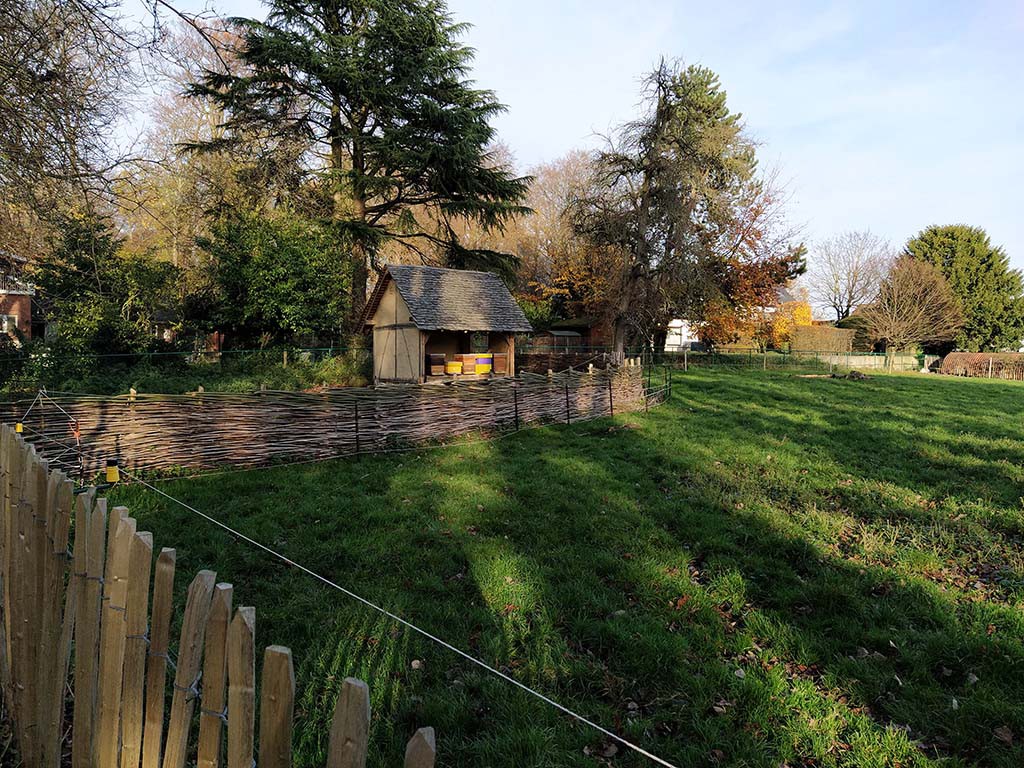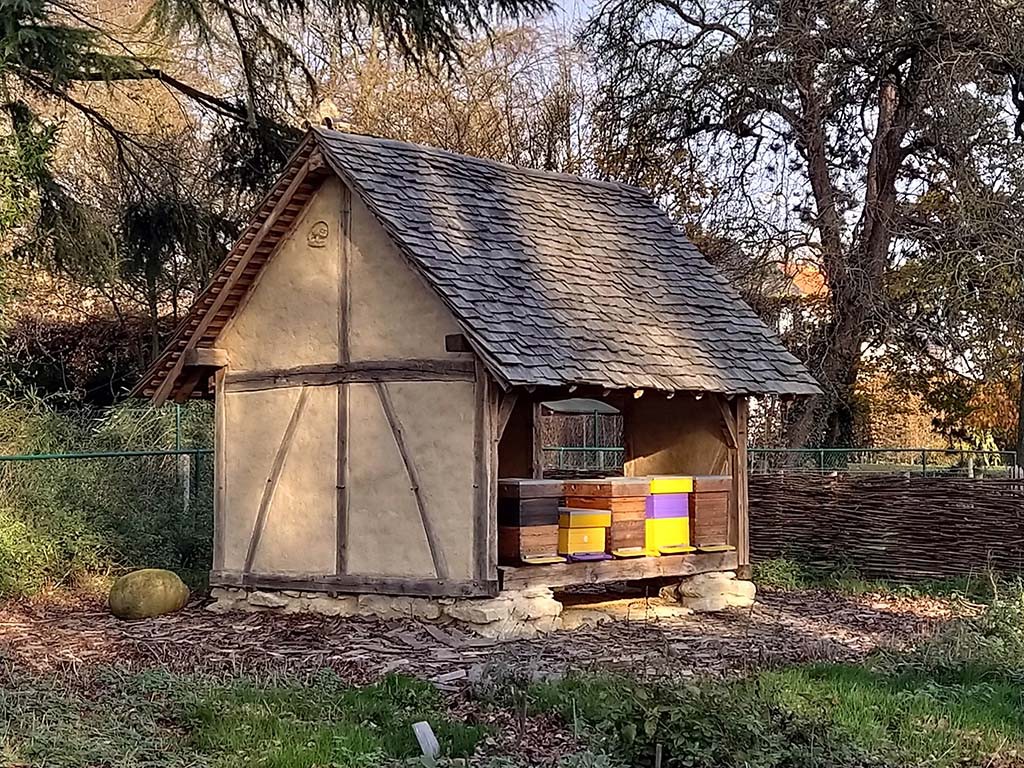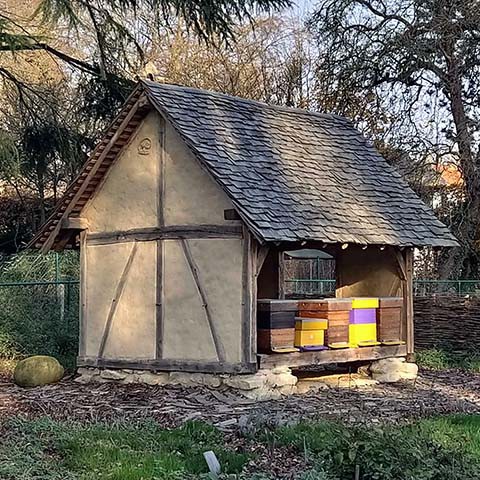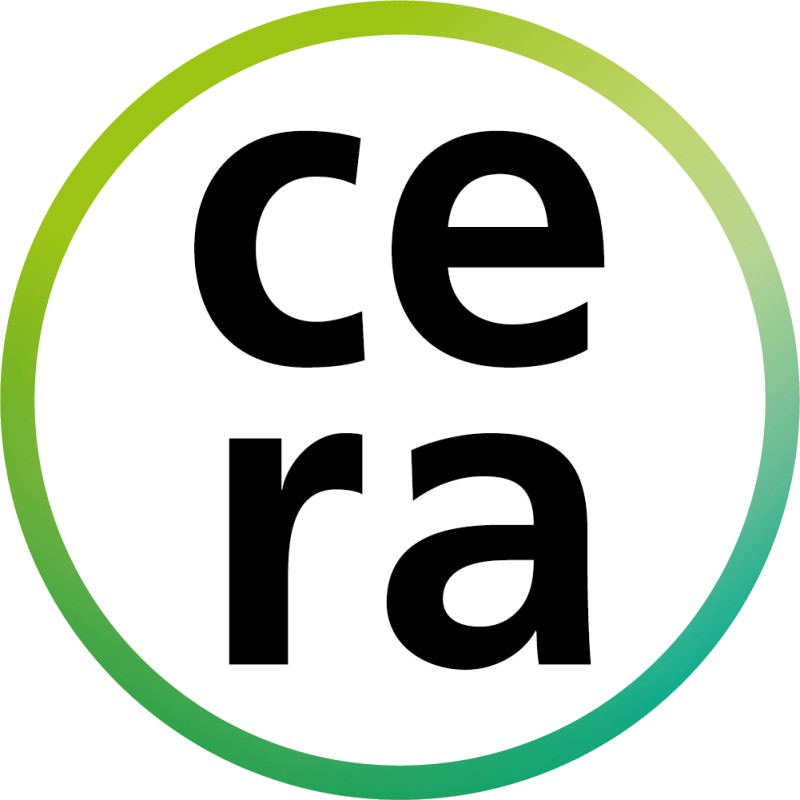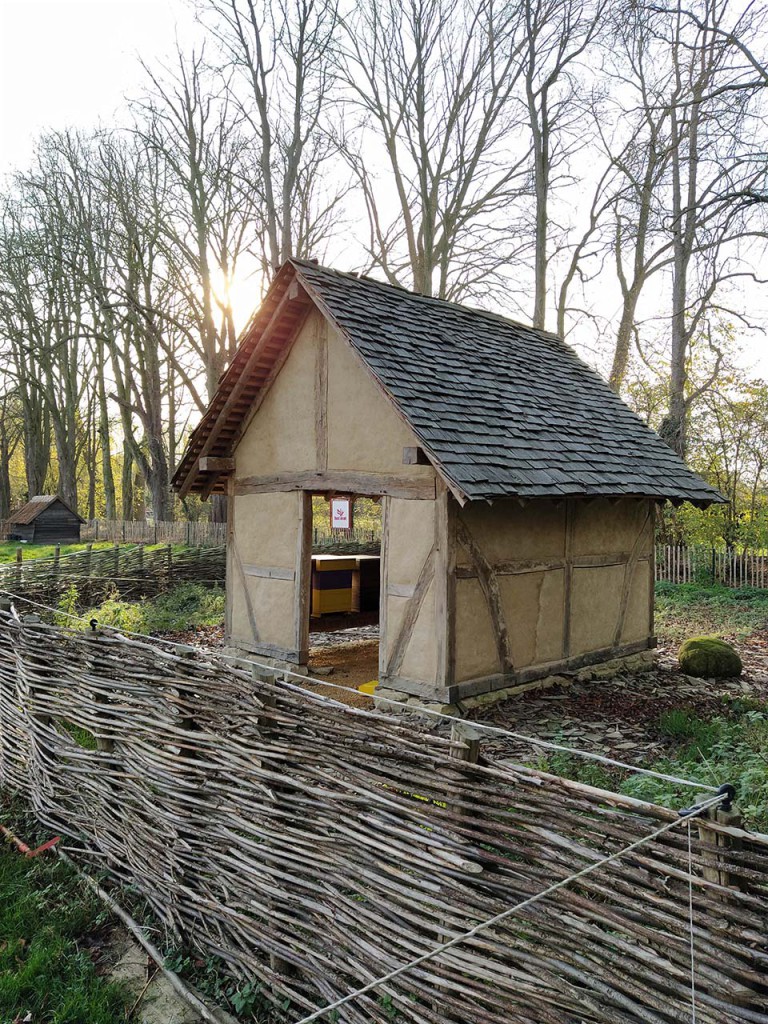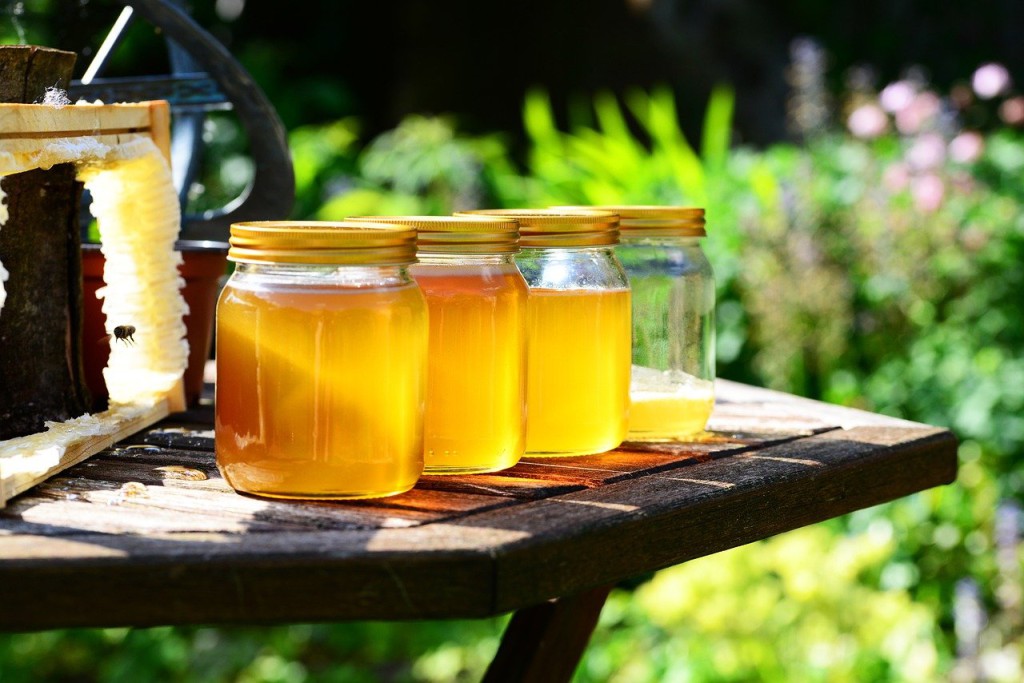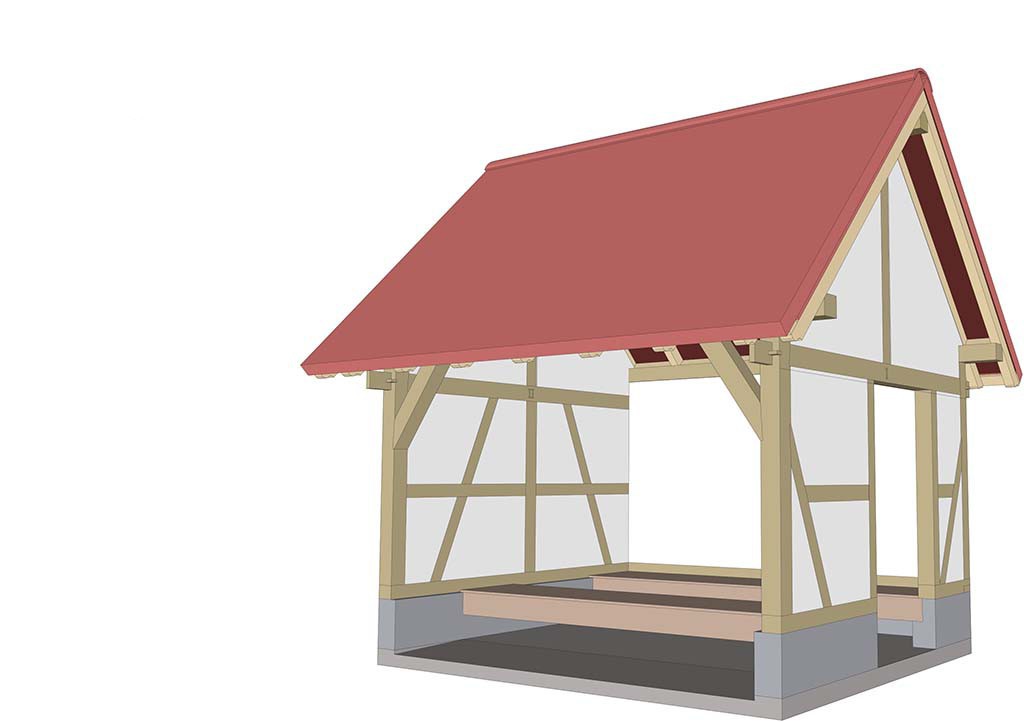Bee hall at the Liermolen
DIY with wattle and daub
This lovely half-timbered bee hall at the Liermolen site is the result of our first Half-timbering class. It was erected with the financial support of CERA and was officially opened on 7 June 2018 by the Royal bee-breeding association of Grimbergen. A beekeeper could place his hives in the open air, but a covered bee hall protects the hives against extreme weather conditions. The bee hall has an open side for the bees to fly in and out and the surrounding Maelbeek valley contains more than enough flowering plants to feed on. Beneficial factors that will help the development of our bees.Honey and beekeeping
Honey was the first sweetener available to man. Already during prehistoric times honey was robbed from wild bee nests in hollow tree trunks and rock crevices. This honey foraging evolved in ancient times into the specialised practise of beekeeping. The earliest known depiction of this technique dates back to ancient Egypt. A stone bas-relief from 4,400 years ago shows that beekeeping was at that time already well developed.Bee hall under construction
In September 2017, this bee hall was built by 18 participants of the first Half-timbering class, a practical introduction to the historical technique of building half-timbered. In terms of craftsmanship, this is the only training in Flanders. The participants go through all steps of the construction process, using only hand tools. According to custom, local materials were also used here, such as oak from the Kempen and sand-lime brick from the outskirts of Brussels. In the photos below you can see step by step how the bee hall was created.Info
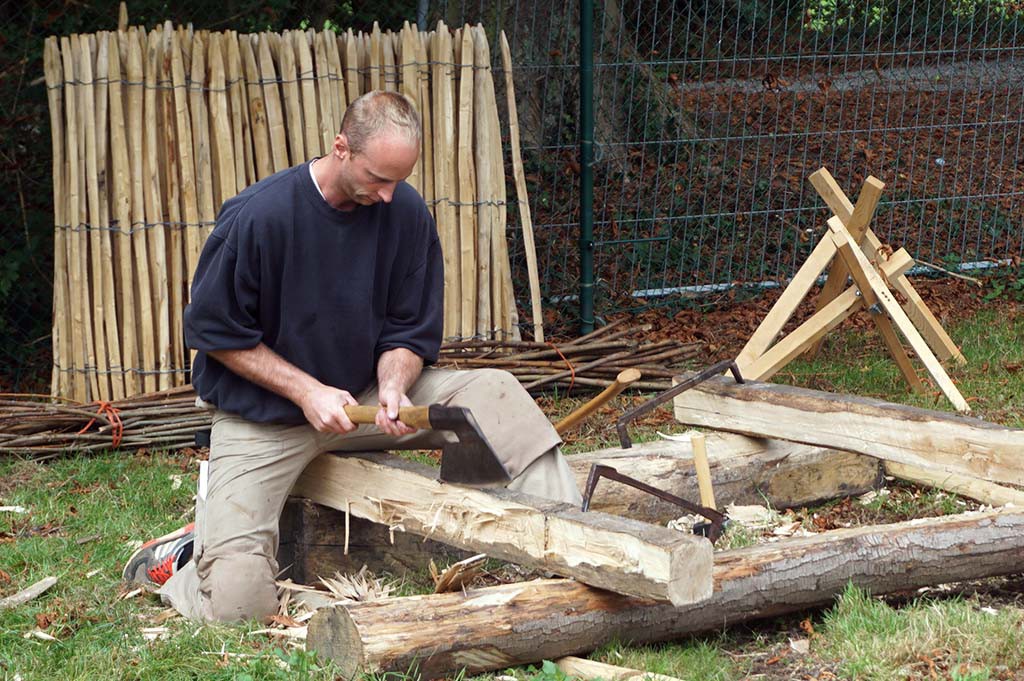
Squaring trunks into beams with the broad axe
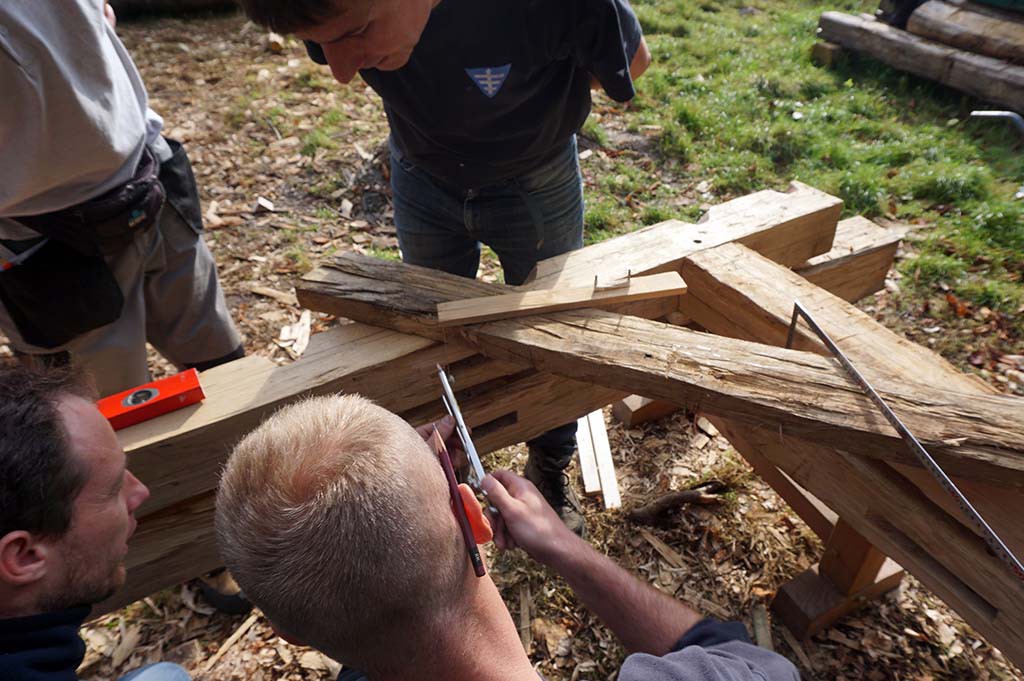
Joining the beams with a mortise and tenon joint
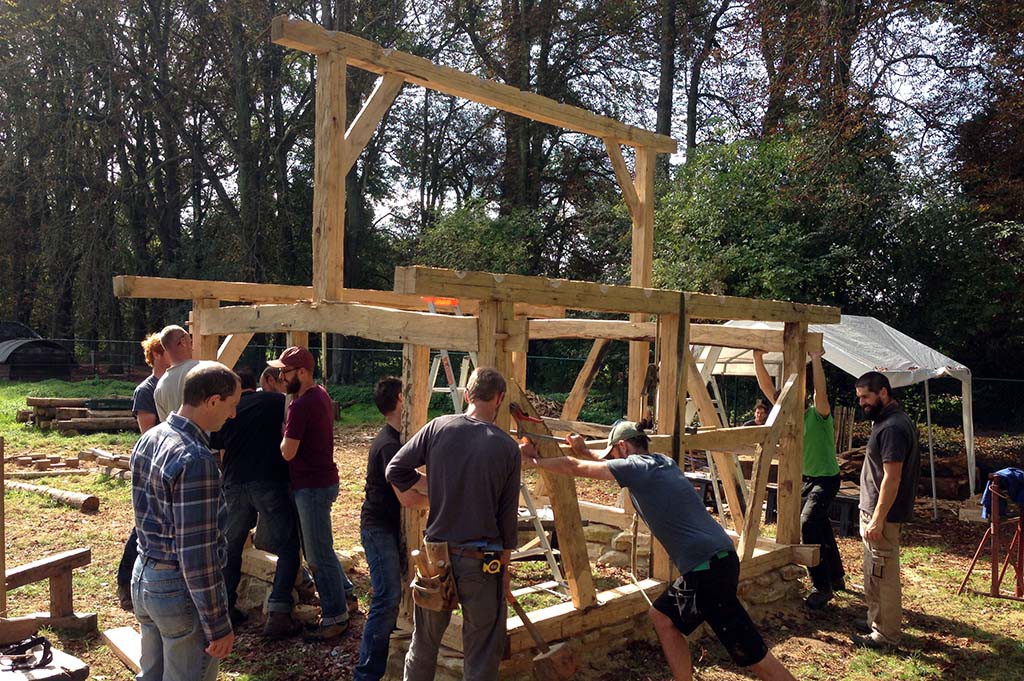
Erecting the wooden frame
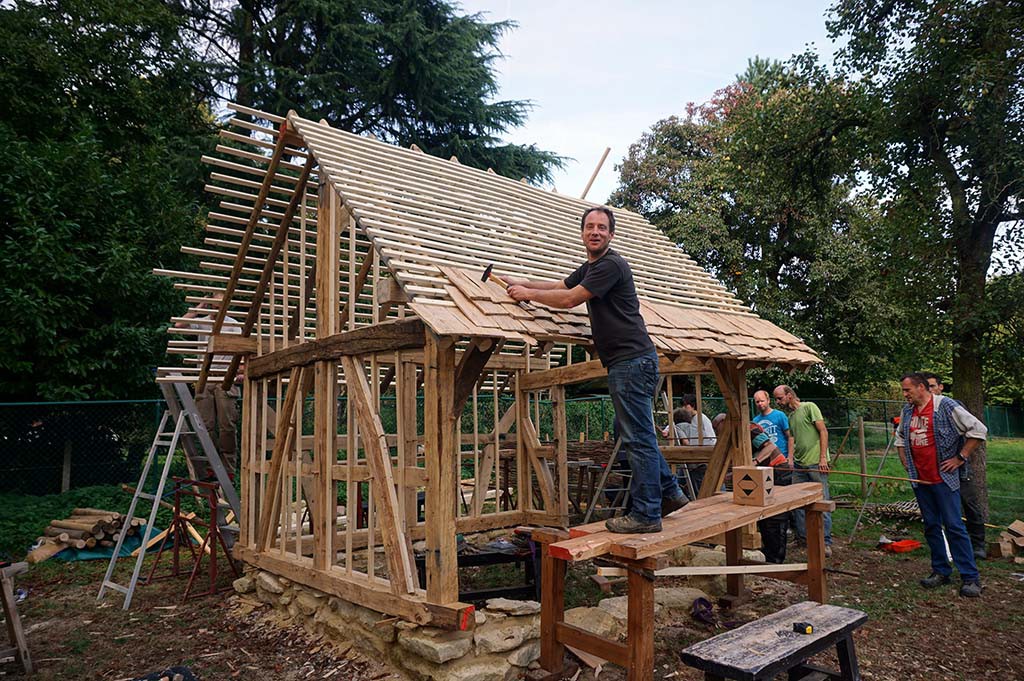
Nailing the shingles on the roof
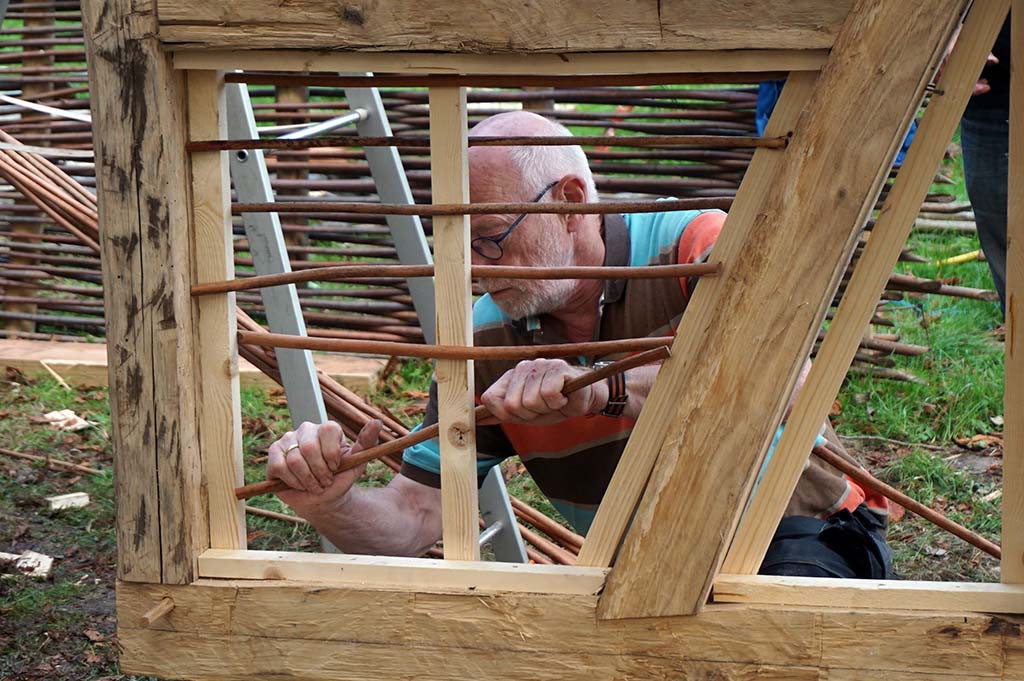
Closing the walls with a willow framework
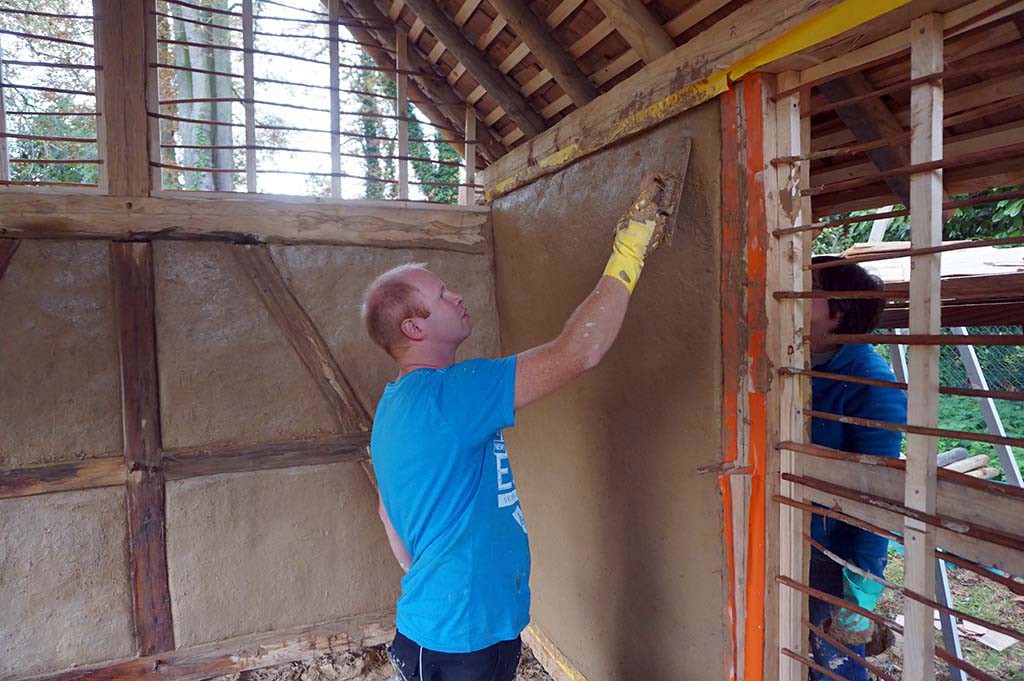
Cladding the framework with a mix of lime, loam and straw
